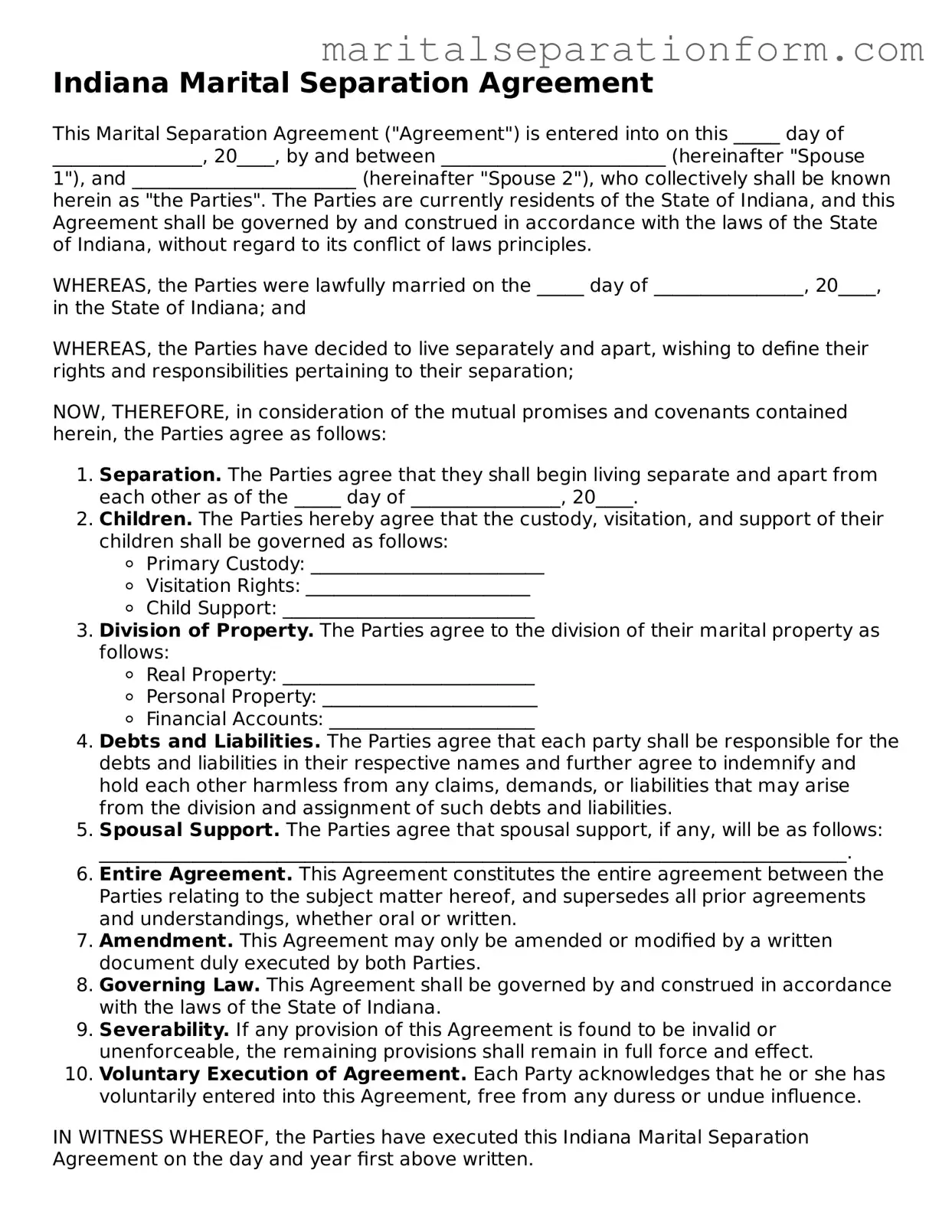Indiana Marital Separation Agreement
This Marital Separation Agreement ("Agreement") is entered into on this _____ day of ________________, 20____, by and between ________________________ (hereinafter "Spouse 1"), and ________________________ (hereinafter "Spouse 2"), who collectively shall be known herein as "the Parties". The Parties are currently residents of the State of Indiana, and this Agreement shall be governed by and construed in accordance with the laws of the State of Indiana, without regard to its conflict of laws principles.
WHEREAS, the Parties were lawfully married on the _____ day of ________________, 20____, in the State of Indiana; and
WHEREAS, the Parties have decided to live separately and apart, wishing to define their rights and responsibilities pertaining to their separation;
NOW, THEREFORE, in consideration of the mutual promises and covenants contained herein, the Parties agree as follows:
- Separation. The Parties agree that they shall begin living separate and apart from each other as of the _____ day of ________________, 20____.
- Children. The Parties hereby agree that the custody, visitation, and support of their children shall be governed as follows:
- Primary Custody: _________________________
- Visitation Rights: ________________________
- Child Support: ___________________________
- Division of Property. The Parties agree to the division of their marital property as follows:
- Real Property: ___________________________
- Personal Property: _______________________
- Financial Accounts: ______________________
- Debts and Liabilities. The Parties agree that each party shall be responsible for the debts and liabilities in their respective names and further agree to indemnify and hold each other harmless from any claims, demands, or liabilities that may arise from the division and assignment of such debts and liabilities.
- Spousal Support. The Parties agree that spousal support, if any, will be as follows: ________________________________________________________________________________.
- Entire Agreement. This Agreement constitutes the entire agreement between the Parties relating to the subject matter hereof, and supersedes all prior agreements and understandings, whether oral or written.
- Amendment. This Agreement may only be amended or modified by a written document duly executed by both Parties.
- Governing Law. This Agreement shall be governed by and construed in accordance with the laws of the State of Indiana.
- Severability. If any provision of this Agreement is found to be invalid or unenforceable, the remaining provisions shall remain in full force and effect.
- Voluntary Execution of Agreement. Each Party acknowledges that he or she has voluntarily entered into this Agreement, free from any duress or undue influence.
IN WITNESS WHEREOF, the Parties have executed this Indiana Marital Separation Agreement on the day and year first above written.
_____________________________________
Spouse 1: _____________________________
Date: ________________________________
_____________________________________
Spouse 2: _____________________________
Date: ________________________________
